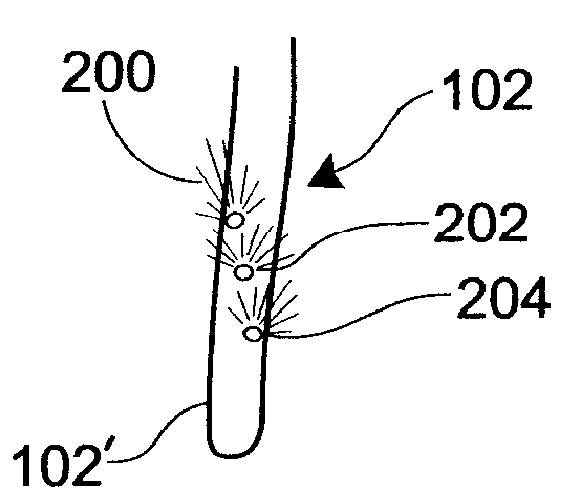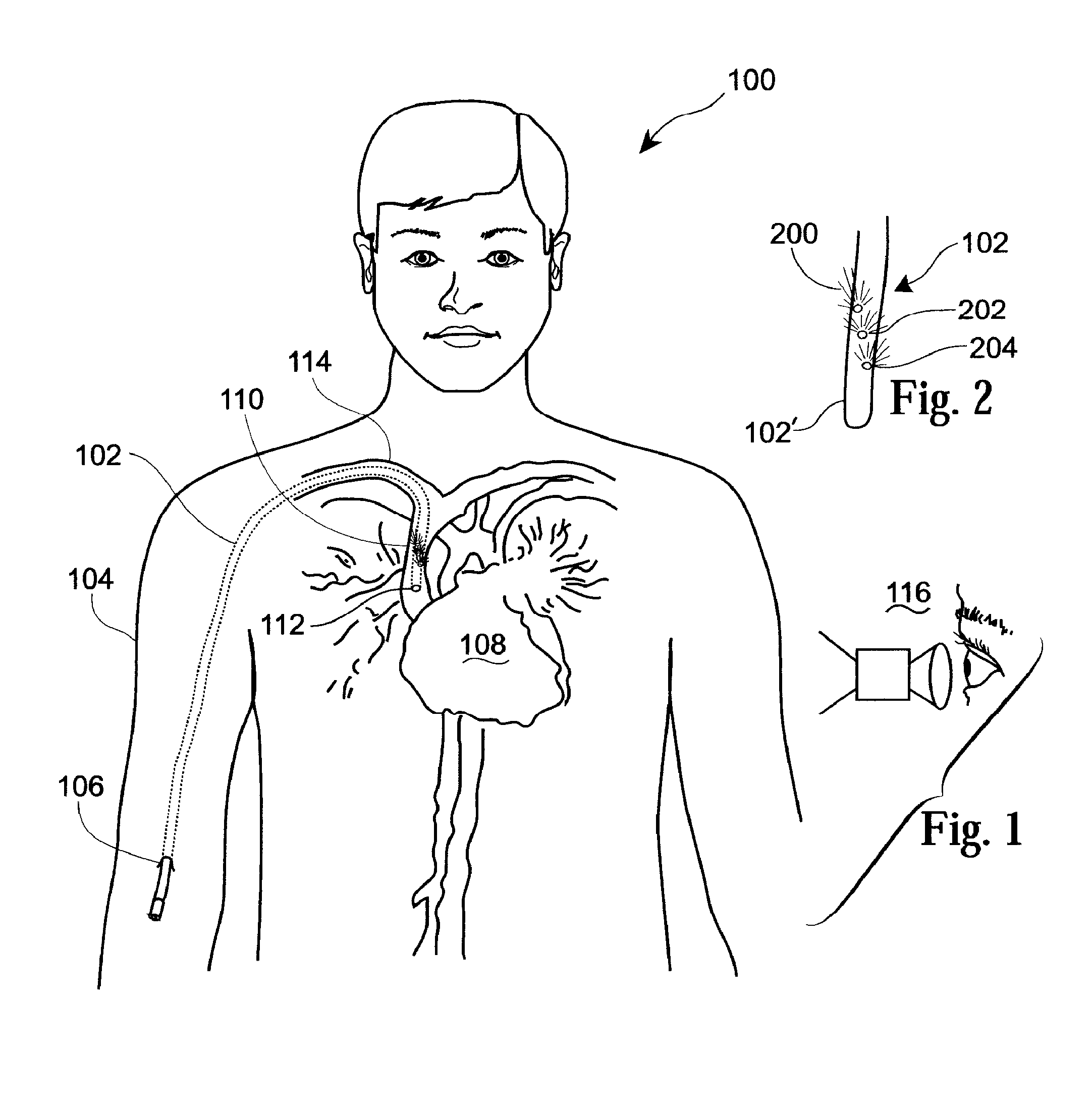Determining Inserted Catheter End Location and Orientation
a catheter and end location technology, applied in the field of vascular access devices, can solve the problems of catheter not being located, picc procedure is not without complications, and uncertainty of the location and orientation of the picc line tip
- Summary
- Abstract
- Description
- Claims
- Application Information
AI Technical Summary
Benefits of technology
Problems solved by technology
Method used
Image
Examples
Embodiment Construction
[0059]FIG. 1 in the drawings illustrates the placement and tracking within a human patient 100 of a catheterization or cannulation device 102 representative of the present invention. The device 102 is may be configured as substantially any catheterization or cannulation device, or in any other form for substantially any procedure requiring venal or arterial access such as for heart catheterization, angioplasty, or shunt placement or for urinary track catheterization, or other medical procedure requiring access to passageways of the body, such as in vascular, organ or subcutaneous access, the invention is herein described with reference to a representative embodiment of the invention in the form of a peripherally inserted central catheter (PICC) device 102.
[0060]In the representative device 102 shown in FIG. 1, and used as a PICC line, the device 102 is usually inserted into one of the large veins in the upper arm 104 near the elbow (e.g., into the basilic vein) by way of a skin open...
PUM
 Login to View More
Login to View More Abstract
Description
Claims
Application Information
 Login to View More
Login to View More - R&D
- Intellectual Property
- Life Sciences
- Materials
- Tech Scout
- Unparalleled Data Quality
- Higher Quality Content
- 60% Fewer Hallucinations
Browse by: Latest US Patents, China's latest patents, Technical Efficacy Thesaurus, Application Domain, Technology Topic, Popular Technical Reports.
© 2025 PatSnap. All rights reserved.Legal|Privacy policy|Modern Slavery Act Transparency Statement|Sitemap|About US| Contact US: help@patsnap.com



